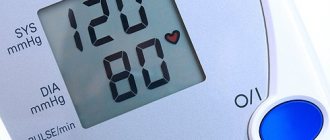What is fasting
Fasting is the voluntary refusal of food. It may have medicinal purposes. But the most common reason for refusing food is the desire to lose weight, especially in the case of women.
Let's look at the benefits that hunger can bring:
- Cleansing the body. Fasting is necessary for food poisoning, as well as during the treatment of certain intestinal and liver diseases. In addition, fasting helps with exacerbation of allergies.
- Weight loss due to lack of carbohydrates and fats.
- Normalization of cholesterol and glucose levels in the blood.
It is believed that periodic one-day fasts prolong life expectancy and youth, and improve well-being. However, it is important to remember that before each refusal to eat, you should consult a doctor and undergo the necessary tests. Otherwise, you risk harming your body.
Summarize
- Fasting is a practice that has been linked to a wide range of possible health benefits, including weight loss, as well as improved blood sugar control, heart health, brain function and cancer prevention.
- From water fasting to intermittent fasting to calorie restriction, there are many different types of fasting to suit almost every lifestyle.
- When combined with a nutritious diet and a healthy lifestyle, incorporating fasting into your life can benefit your health.
The article was prepared by experts for informational purposes only. It should not be used as a guide for treating medical conditions and is not a substitute for professional medical advice, diagnosis, or treatment. In case of illness or any symptoms, you should always consult a doctor and not self-medicate.
Tags: Fasting
About the author: Anastasia Sheveleva
Candidate of Medical Sciences, doctor of the highest category, therapist, registered dietitian, nutrition consultant. More about the author.
- Related Posts
- 9 Possible Side Effects of Intermittent Fasting
- Intermittent fasting for weight loss for women: diagrams and description
- Is it possible to drink water while fasting?
« Previous entry
Contraindications to fasting
Refusal to eat may be contraindicated in patients suffering from:
- oncological diseases;
- tuberculosis;
- heart failure;
- diseases of the liver and genitourinary system.
Fasting is also contraindicated in patients who have recently suffered a serious illness or organ transplant. It is forbidden for people suffering from type I diabetes to fast: this can lead to death in a short time.
Pregnant women and nursing mothers who are trying to lose excess weight after childbirth should not refuse food.
Benefits of fasting
The positive effect of therapeutic fasting is the ability to:
- remove poisons, toxins and other harmful substances
- mobilize the body's reserve forces
- accelerate the production of hormones with anti-inflammatory effects
- normalize body weight
General improvement of the body is observed only with short fasting, which is carried out under the supervision of a doctor. Increased potency is not a necessary result of fasting, since refusal to eat does not have a direct effect on the functioning of the reproductive system.
Fasting: what happens in the body
In a fasting person, the level of hemoglobin in the blood decreases. This leads to a decrease in the number of red blood cells responsible for transporting oxygen. As a result, internal organs, in particular the brain, begin to experience an acute lack of oxygen.
Due to lack of nutrients, a person feels apathy and weakness. Concentration decreases and sleep is disturbed. Fasting can be accompanied by fainting and nervous breakdowns. In severe cases, anemia develops.
What does fasting lead to: consequences
Possible consequences of not eating include:
- Intestinal dysfunction. Due to lack of food, the intestines gradually lose their functions. Having returned to their usual diet, a person often faces constipation, leading to hemorrhoids.
- Slowing down metabolic processes. After a hunger strike, our body tries to compensate for the lack of nutrients as quickly as possible; a person begins to uncontrollably eat food in huge quantities. And since our metabolism slows down during fasting, we instantly gain weight. Often body weight becomes even greater than before fasting.
- Hormonal imbalance. Fasting can cause miscarriage during pregnancy. A woman who has fasted for a long time sometimes loses her ability to conceive forever.
- Dehydration. A person receives fluid not only through drinks, but also through food. Accordingly, a fasting person requires more fluid. Particularly dangerous is dry fasting, during which one even refuses water. Lack of fluid in the body can lead to death within a few days.
- Development of anorexia. This is a serious eating disorder in which the body completely rejects food. People suffering from anorexia often experience a gag reflex after eating.
- Disruption of the functioning of some internal organs. The cardiovascular system and brain are most often affected.
Stop breathing and save. The bright side of hypoxia
What is hypoxia?
This is a condition that appears when there is insufficient supply of oxygen to the body’s tissues or a violation of its utilization in the process of biological oxidation. How a pathological process can be observed in many diseases.
When does hypoxia develop?
Hypoxia occurs both with a decrease in the oxygen content in the inhaled air and with changes in the respiratory system, the transfer of oxygen from the lungs to the organs, and its intracellular use. Let's look at some of these situations.
Less oxygen in the air. Many people know that mountain air is more rarefied and contains less oxygen per unit volume. Accordingly, if a resident of lowland areas finds himself in such conditions, he will begin to experience oxygen starvation.
Difficulty in the passage of oxygen from the lungs to the blood. This is possible, for example, with a number of pathologies of the respiratory system.
Read the material on the topic: Breathe easily and cleanly! The whole truth about bronchitis
Fewer red blood cells in the blood. Normally, oxygen entering the lungs is captured by red blood cells and, binding to hemoglobin, is carried away to tissues and organs. If there are not enough red blood cells (and hemoglobin), the amount of oxygen carried is reduced. This happens, for example, with anemia.
Stagnation of blood. One example is heart failure. In this case, stagnation in the circulatory system is observed.
Suppression of oxidation and reduction processes in tissues. What if oxygen was delivered to its target, but the intracellular “factory” itself, where it manifests its functions, temporarily does not work? This situation is possible with some poisonings.
When is hypoxia dangerous?
All cells of the body need oxygen. Some of them can do without it for a longer time, others - for a very short time.
Of course, significant hypoxia that exists even for a short time is dangerous. In this case, loss of consciousness and death may occur.
Chronic, prolonged hypoxia caused by one or another pathological process (for example, anemia, chronic heart failure, replacement of the functional part of the lung with connective tissue) also has a negative effect on the body. In conditions of chronic lack of oxygen, dystrophic changes in organs can develop.
Read material on the topic: How to live with chronic obstructive pulmonary disease without losing quality of life?
There is one “but” here. If any of the readers have been to the mountains, they may be familiar with the feeling of improved mood, as if the blood is flowing faster. In addition to the change in situation and the influence of the mountain landscape, there is a purely physiological explanation for this. The rarefied, oxygen-poor air of mountainous areas encourages the body to “fight for oxygen.” To ensure its full delivery to the organs, the body must mobilize its internal resources. There is an increase in breathing, increased blood circulation, as a result of which vital forces are activated.
If someone decides to rise even higher, to where there is even less life-giving gas, the body’s reaction will be completely different. Once a certain “line” is crossed in oxygen concentration and residence time, the situation begins to become dangerous.
Based on the above, the benefits and harm that hypoxia can bring become clear. Can it have a healing effect? In other words, can it be used in the treatment of diseases?
No harm
At one time, scientists from the Institute of Physiology of the Ukrainian Academy of Sciences seriously worked on the problem of hypoxia. Subsequently, they were continued by the research group of Professor A.3. Kolchinskaya.
In the process of work, a computer program was developed with which it was possible to evaluate the performance of the respiratory system according to a number of parameters (how much air is inhaled, how quickly oxygen enters the blood, heart rate, etc.).
One of the groups studied consisted of athletes and climbers. The other is from patients with various pathologies: chronic bronchitis, bronchial asthma, anemia, diabetes, etc.).
Read the material on the topic: We want to breathe! How to help children and adults with bronchial asthma?
Based on a computer analysis, it was shown that even illnesses that are not particularly related to the respiratory system have a negative impact on it. It also suggested an opposite dependence: its work can affect the state of the entire organism.
Read material on the topic: How does the respiratory system work? Just something complicated
As a result, researchers decide to test the effect of air with a reduced amount of oxygen on the body. The device was called a hypoxicator, and this procedure itself was called hypoxic training.
However, the problem was that it was impossible to continuously keep the subject on the device.
To achieve lasting results, the treatment session was divided into series. For several minutes the person breathed with the help of the device, then with regular air, alternating these phases several times.
As a result, there was a gradual training of the respiratory organs, blood circulation, hematopoiesis and mitochondria.
It is logical to assume that the approach to each patient should have been individual. It was necessary to determine the amount of oxygen in the inhaled air at which the mechanisms of adaptation to hypoxia would begin to work. For this reason, before starting treatment, a hypoxic test was performed to determine how the body reacts to oxygen-depleted air.
What were the results of using interval hypoxic training (IHT)?
The method has shown varying degrees of effectiveness in the treatment of different forms of bronchial asthma. It was also found that prolonged inhalation of the hypoxic mixture led to bronchospasm, while short-term inhalation caused their expansion.
Increasing the lumen of the bronchi also had a beneficial effect on the course of chronic pulmonary pathologies.
Adaptation to hypoxia during treatment led to an increase in hemoglobin content in the blood and the elimination of anemia resulting from blood loss. The effectiveness of the method was especially high in these cases.
The method had a positive effect on the course of coronary heart disease. The number of painful attacks, extraordinary contractions of the heart, and episodes of ischemia decreased, and performance increased.
Read material on the topic: Coronary heart disease: diagnosis and treatment
The effect of hypoxic training on hypothyroidism (a condition that develops due to a decrease in thyroid hormones in the blood) turned out to be interesting. In case of mild degree of this pathology, after a course of IHT it was possible to discontinue hormonal treatment, and in case of moderate and severe degree, it was possible to reduce the dosage of medications taken.
For the purpose of prevention and treatment, IHT was also used during pregnancy in women with a high risk of developing late toxicosis, as well as in pregnant women with pretoxicosis. A positive effect was noted in patients with chronic salpingo-oophoritis (inflammatory process of the uterine appendages (fallopian tubes and ovaries)).
Positive changes were observed in the treatment of myopia. In some patients, vision was completely restored, in some there was a significant improvement.
The method has proven its effectiveness when used in practically healthy people, in particular in athletes.
Instead of an epilogue
Judging by the presented results, hypoxic breathing training has proven to be an effective (to varying degrees) method for treating a number of different pathologies. The initial indicators of tolerability of such training directly depend on the characteristics of the individual patient’s body. However, in a certain percentage of cases - in particular, with one of the types of bronchial asthma - there was a deterioration.
Therefore, determining indications and contraindications, developing an individual treatment regimen and conducting the course itself is carried out only by a doctor with appropriate training.
Text: Enver Aliyev
Other related articles:
How to get rid of a barking cough? We're talking about laryngitis
What will help with a cough: badger fat or mustard in socks?
William Harvey vs. Claudius Galen: How does the human circulatory system work?
How to break a hunger strike correctly
Fasting (especially long-term) radically changes the normal functioning of the human body and slows down metabolic processes. For this reason, it is not recommended to suddenly return to your previous diet.
If a person has been forced to give up food and water for a long time, then returning to their usual diet should take place in several stages:
- During the first week after breaking the fast, you can only drink still water. By the end of the week, it is allowed to switch to juices, and also gradually introduce liquid foods into the diet (ex: broths, mashed potatoes diluted with milk). The serving should not exceed 50-100 g.
- In the second week, salads and cereals are introduced into the diet. The portion can be increased, but not more than 50 g.
- During the third week, the menu includes foods that the patient ate before fasting. At the same time, the consumption of baked goods, fried, pickled and smoked foods, spices and alcohol is prohibited.
- Only in the fourth or fifth week can the patient begin to eat as usual.
What is special about therapeutic fasting?
Surely you have heard that sometimes it is useful to arrange “fasting” days and eat a minimal amount of food to allow the body to cleanse itself and process available resources. Therapeutic fasting
, or “
fasting
”, is based on approximately the same principle.
However, we are talking not about days, but about hours. Fasting involves alternating hours when a person eats with hours when he refuses food
and can only drink water.
One of the most popular schemes is 8x16
, i.e. a person can eat for eight hours and must fast for the next 16 hours. Considering that people are recommended to sleep for about 6-8 hours, the regime is not so “draconian,” although this is a matter of habit.
Intermittent fasting
does not prohibit the consumption of any foods, but if you still want to lose weight, then you should be guided by the principles of proper nutrition and give up unhealthy and fatty foods: fast food, processed foods and sweets. During the so-called “eating windows”, when food can be taken, it is better to do so while maintaining the usual routine, i.e. allocate breakfast, lunch and dinner, and not make do with occasional snacks.
You don’t need to meticulously count calories either, but you shouldn’t exceed the recommended average daily calorie intake. It is believed that intermittent fasting teaches discipline, and weight loss occurs due to a decrease in fat mass.
How can you replace food refusal?
If a woman is ready to go on a fast to lose weight, then she should reconsider her decision in favor of more gentle methods:
- Exercise stress. Sports activities are recommended for people forced to lead a sedentary lifestyle. Doing exercises for 10 minutes twice a day is no less effective way to lose weight than heavy physical activity for 1.5-2 hours 2 times a week.
- Switching to proper nutrition for women. You should avoid eating foods that increase body weight (baked goods, sweets, etc.). Since it is very difficult to immediately eliminate junk food from your diet, it is recommended to do it gradually. It is best to eat in small portions (200-300 g at a time) 5-6 times a day.
Weight gain can be caused by various diseases. In this case, all of the listed methods of combating excess weight will be ineffective. If excess kilograms appear for no apparent reason, you should consult an endocrinologist.
Thus, prolonged fasting in the absence of medical indications can cause irreparable harm to our body. Refusal of food slows down metabolism, disrupts the functioning of internal organs and increases the risk of developing diseases. It is not at all necessary to make such sacrifices for the sake of a beautiful slim figure - you just need to give up high-calorie foods and switch to proper nutrition with the SECRETFIT healthy food delivery service!
Preparing for Intermittent Fasting
Whatever intermittent fasting scheme you choose, you should remember a few simple rules of preparation that will help you in the fight against excess weight.
- Two weeks before starting interval eating, you should avoid foods that take more than three hours to digest. These include, for example, eggplants, sauerkraut, pickles, buckwheat and lamb.
- From the first day of preparation, we include fresh fruits and vegetables in the diet. Remember the first point. Check how quickly vegetables and fruits are digested.
- Prepare yourself for the fact that for effective weight loss, your diet must contain a lot of fiber; select foods with a high fiber content in advance. Look at the recipes, choose the dishes that you want to eat during the “eating window”.
Do you need motivation to start fasting? Perhaps only at first. Look at stories and reviews on the Internet, talk to those who have already tried fasting. This will help you and strengthen your self-confidence. Don't despair if you relapse: this happened to hundreds of people before you and will happen to hundreds after. What is more important is whether we learn a lesson for ourselves, whether we can find the strength to try again.











